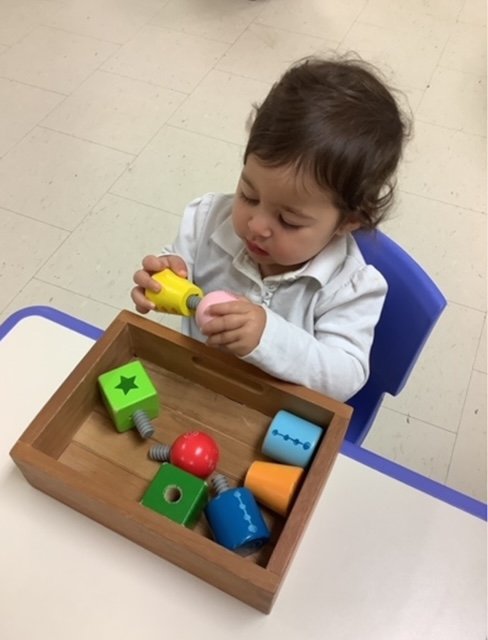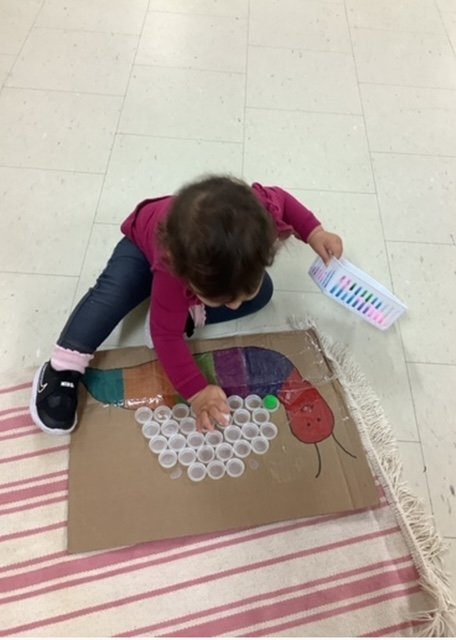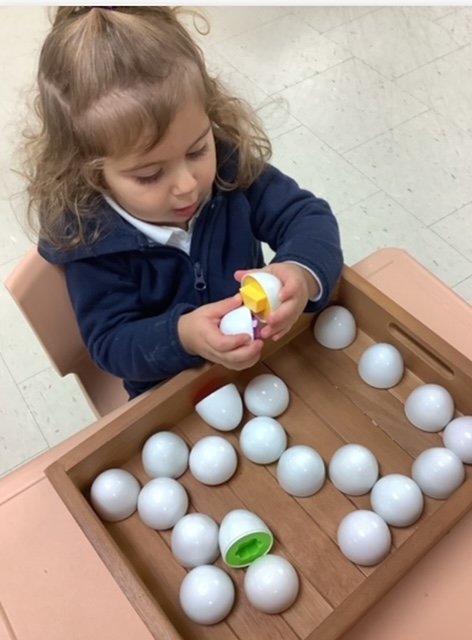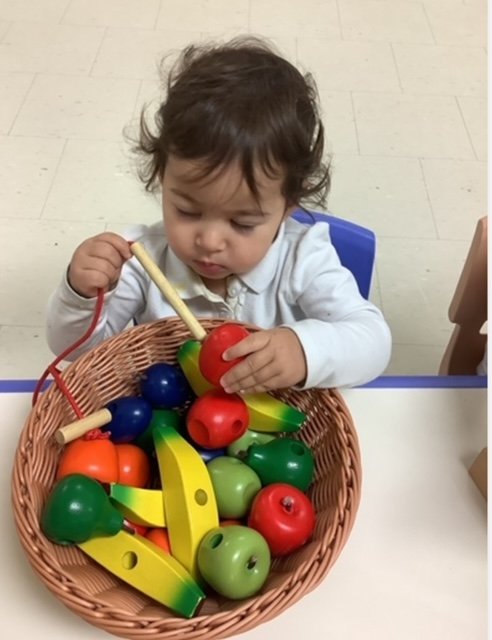
Toddlers
18 months to 2 1/2 years.
At Tiny Bees Childcare we introduce our toddlers to a structured day. Toddlers are fast learners that are constantly changing. Interactions between caregivers and toddlers matter in a big way. These interactions lay the foundation for all subsequent development, making a focus on strengthening connections absolutely critical for improving child outcomes. At Tiny Bees Childcare, toddlers are given the freedom to explore and play in a fun, safe and stimulating environment. Toddlers are able to work with a wide variety of Montessori materials and educational toys in a spacious environment. We constantly rotate toys so that children get a large variety of toys that capture their attention. Our Toddler Montessori Program safely supports your toddler’s drive to do things alone, developing confidence and a sense of competence.
Children at this age engage in activities in the following areas of learning:
Circle Time
With their wide-eyed curiosity and eager exploration, these little ones eagerly gather in a semi circle, creating a buzzing atmosphere of joy and anticipation. Our toddlers start circle time with one friend choosen to hold the Canadian flag and all friends join in on singing Oh Canada. Their tiny hands clapping and their sweet voices rising in laughter and songs, it is evident that circle time is the highlight of their day. They do the good morning train, how many days of the week, months of the year, what’s the weather through songs to ensure that they are staying engaged. They also have interactive stories, Montessori group learning, and simple sensory activities, these little learners delight in engaging and multisensory experiences. Circle time at this tender age fosters their language development, strengthens social connections, and encourages their emerging independence. It is heartwarming to witness their growing enthusiasm and genuine connection to the group as they eagerly participate, a true testament to the magic of circle time for these 18-month-old toddlers.
Practical Life
These are purposeful activities that help children develop fine motor skills, hand eye coordination, independence, concentration, confidence and self-esteem. Practical life activities are based on real life skills. When taught early in life, they allow children to believe in themselves and develop self-discipline that they take with them through their lives.
Why is this important? It teaches the child things they will need to learn, but also that are motivated to learn while doing it in a way that is beneficial to the child.
Examples:
Transferring from one bowl to another - Help with using utensils for feeding
Tucking in their chairs when completed at the table
Going to get their own water bottle
Clearing their plates after each meal and placing it in the bucket
Sensorial
These exercises are designed to awaken children’s five senses: sight, sound, touch, smell and taste. These materials define height, size, shape, colour, sounds, smell and texture. With an awareness these concepts, the child develops clear and detailed vocabulary with guidance from their educators. The development and refinement of our senses are greatest during the earliest years of development.
Examples:
Pink Tower (Only 5)
Cylinder Blocks
Brown Stairs
Knobless Cylinders
Color Box 1
Math
Children are introduced to the world of arithmetic in a logical, concrete, manner; from quantity to the idea of zero that are expressed in concrete form. Children are able to manipulate and internalize these concepts while being intrigued and drawn into mathematics. Children are exposed to numbers and math in their daily lives, as they see numbers on calendars, clocks and other daily objects, or hear their parents discussing money or how many of something exists. In the classroom our toddlers are introduced to numbers at this young age in an engaging way.
Examples:
Sandpaper numbers
Language
Children are introduced to the phonetic sounds of the letters, which give them an understanding of written language. Tracing the letter of the alphabet made of sand paper prepare the children for writing at this age.
Examples:
Sandpaper letter
Object box









